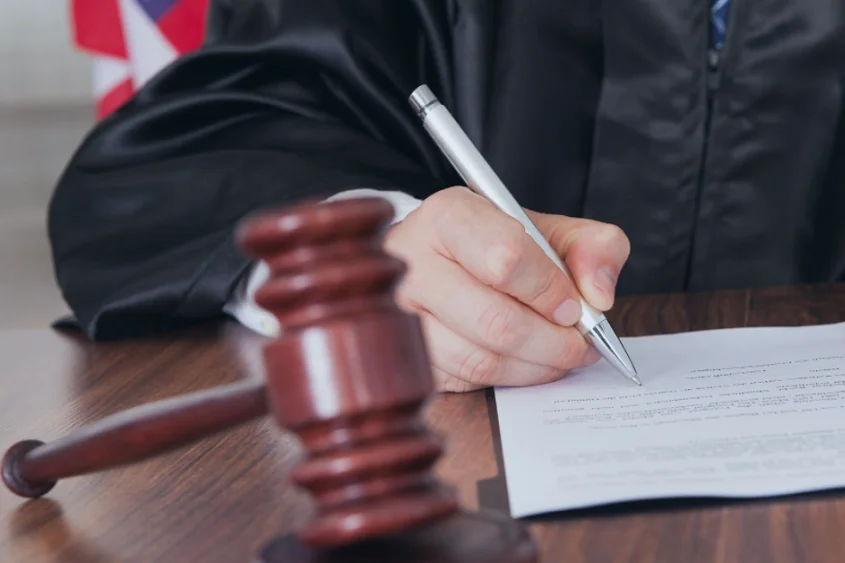International Patent Protection: Navigating the Differences Between Countries
- January 28, 2023
- By Sarita Thomas
- Read 6 minutes
International patent protection is essential for businesses and innovators to secure and maintain their intellectual property rights globally. Navigating the differences in patent laws and regulations across countries can be challenging, but a comprehensive strategy and understanding can aid in successful patent protection.
International patent protection is crucial for businesses and innovators as it allows them to secure and maintain their intellectual property rights in multiple countries, ensuring they can prevent others from profiting from their inventions. It also helps to protect the rights of inventors and encourage innovation.
Navigating patent laws in different countries can be a challenging task, as patent laws vary from country to country. Some of the key challenges include understanding different patentability criteria, enforcement and infringement laws, and coordinating the patent application process across multiple countries. This can make the process of securing and maintaining international patent protection difficult, but it is important for businesses and innovators to understand and overcome these challenges in order to effectively protect their intellectual property.
Understanding Patent Law Differences
Comparison of patent laws in major countries (US, Europe, Japan, China)
Patent laws in major countries such as the US, Europe, Japan and China differ in several aspects. For example, the US has a first-to-invent system, while most of Europe and Japan have a first-to-file system. China has a stricter standard for patentability, and a different system for enforcing patent rights. Understanding the differences in patent laws across these countries is crucial for businesses and innovators looking to protect their intellectual property internationally.
Key differences in patentability criteria, enforcement and infringement
- Patentability criteria: Different countries have different requirements for what can be patented. For example, some countries may have stricter standards for novelty and non-obviousness.
- Enforcement: The ways in which patent rights can be enforced also vary between countries. For example, some countries have stronger legal protections for patent holders, while others may have more lenient penalties for infringement.
- Infringement: The definition and scope of patent infringement also differs between countries. For example, some countries may have a broader definition of what constitutes infringement, while others may have a narrower one.
- Administrative procedures: The process and time for examination of patent application and issuance of patent also differs between countries.
- Maintenance and renewal: The cost and period for maintaining and renewing a patent also differs between countries.
- Litigation: The process and cost of patent litigation also differs between countries. Some countries have more favorable conditions for patent holders while others may have more favorable conditions for defendants.
These differences in patent laws and regulations can greatly impact the global patent strategy of a business or innovator. Different patentability criteria and enforcement laws may require the need to tailor patent application and enforcement approaches to specific countries. Failure to do so may result in weak or unenforceable patents, and potentially lost revenue. Therefore, it’s essential to have a comprehensive understanding of these differences and to develop a tailored patent strategy that takes them into account.
Navigating the International Patent Application Process
There are several options available for international patent application, such as the Patent Cooperation Treaty (PCT) and regional patent offices.
The PCT is an international treaty administered by the World Intellectual Property Organization (WIPO) that provides a centralized filing system for patent applications. It allows applicants to file a single patent application that can be used to seek protection in multiple countries, thereby reducing the cost and complexity of the patent application process.
Alternatively, applicants can file directly with regional patent offices such as the European Patent Office (EPO) or the African Regional Intellectual Property Organization (ARIPO) which provide centralized patent application process for multiple countries within a region.
Additionally, applicants can file directly with the national patent office of each country where they seek protection. This is called national phase application.
Each option has its own set of advantages and disadvantages, such as cost, time and complexity. Therefore, it’s important to carefully evaluate the options and choose the best one based on the specific needs and goals of the patent application.
Pros and cons
- Patent Cooperation Treaty (PCT) Pros:
- Allows applicants to file a single patent application that can be used to seek protection in multiple countries, reducing the cost and complexity of the patent application process.
- Provides a centralized examination process, increasing the efficiency of the patent application process.
- Allows applicants to delay the decision to enter national phase, giving them more time to evaluate the commercial potential of their invention.
- Cons:
-
- PCT application is more expensive than national phase application.
- PCT application process is more complex and time-consuming than national phase application.
- The PCT process does not result in the grant of a patent, but only in a preliminary examination report which must be used in each national/regional phase.
- Regional patent offices (e.g. EPO, ARIPO) Pros:
- Provides a centralized patent application process for multiple countries within a region, reducing the cost and complexity of the patent application process.
- Allows applicants to seek protection in multiple countries with a single patent application.
- Provides a centralized examination process, increasing the efficiency of the patent application process.
- Cons:
-
- The patent may need to be validated in each country after grant, which could be costly.
- The patent may be subject to revocation in each country separately.
- It may not be available for all countries.
- National patent office Pros:
- Direct protection in the country of interest
- No validation cost after grant
- No need to translate the patent application
- Cons:
-
- Costly and time-consuming to file in multiple countries
- Complex and different examination process in each country
- Different maintenance fee and renewal period in each country.
Tips for managing and coordinating the international patent application process
- Establish a clear and well-defined patent strategy that takes into account the specific needs and goals of the patent application
- Understand the patent laws and regulations of the countries where protection is sought
- Seek professional advice from patent attorneys or agents with experience in international patent protection
- Identify and prioritize key markets for patent protection
- Carefully evaluate the different international patent application options and choose the best one based on the specific needs and goals of the patent application
- Use a centralized system for managing and coordinating the international patent application process
- Regularly review and update the patent strategy as needed.
Strategies for Global Patent Protection
Strategies for global patent protection involve identifying key markets for patent protection, securing and maintaining patent protection in those markets, and developing a comprehensive patent strategy that takes into account the specific needs and goals of the patent application. Some strategies that businesses and innovators can use to protect their intellectual property globally include:
- Identifying key markets: Identifying the markets where the invention is most likely to be used, sold or licensed can help businesses and innovators to prioritize the countries in which they should seek patent protection.
- Filing international patent applications: Filing international patent applications, such as through the Patent Cooperation Treaty (PCT) or regional patent offices, can provide a cost-effective and efficient way to secure patent protection in multiple countries.
- Building a strong patent portfolio: Building a strong patent portfolio by filing multiple patents for different aspects of an invention can increase the chances of successfully enforcing patent rights in different countries.
- Working with local patent counsel: Working with local patent counsel who have expertise in the patent laws and regulations of the countries where protection is sought can help to ensure that the patent application process is managed effectively and that patent rights are enforced.
- Regularly reviewing and updating patent strategy: As the market and competition evolves, it is important to regularly review and update the patent strategy to ensure that it remains aligned with the business objectives and current market conditions.
- Securing other forms of IP protection: In addition to patents, other forms of IP protection such as trademarks, copyrights, trade secrets and design patents can also be used to protect the intellectual property globally.
Overall, having a comprehensive understanding of the different patent laws and regulations, as well as the specific needs and goals of the patent application can greatly aid in developing an effective global patent protection strategy.
Sarita Thomas
Latest Blogs
Blog Categories
- Intellectual Property (IP) Strategy (84)
- Intellectual Property Asset Management (IPAM) (17)
- IP Monetization (4)
- IP News (7)
- Patent Drafting (2)
- Patent Litigation (6)
- Patent Prosecution (8)
- Patenting (18)









No comment yet, add your voice below!